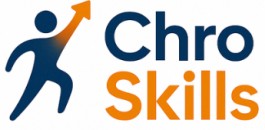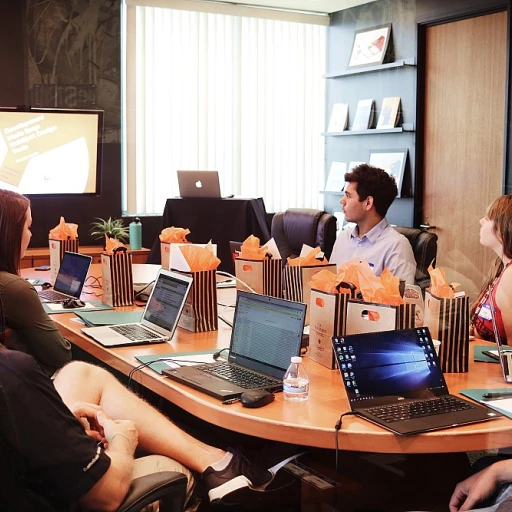
Understanding the Collections Industry
Delving Into the Collections Sector
Navigating the collections industry requires a nuanced understanding of its distinct characteristics and challenges. From the constant pressure to meet targets to the dynamic interaction with various stakeholders, each element introduces its own complexities. Employees in this field often face high-stress situations, making retention strategies critical to maintaining a motivated workforce. Creating a work environment where employees feel valued can significantly impact turnover rates. High stress levels can lead to burnout, affecting job satisfaction and, ultimately, employee retention. Additionally, strategies that emphasize the importance of work-life balance can aid in reducing turnover and improving overall job satisfaction. The collections industry also requires specific retention strategies tailored to its needs. Implementing flexible work arrangements can prove beneficial in dealing with the demand for work-life balance. Additionally, fostering a supportive company culture and incorporating employee engagement tactics can further enhance retention success. By understanding these nuances, organizations can develop effective employee retention strategies that lay the foundation for a positive work culture in collections. Companies must prioritize the engagement of their people and provide adequate support to ensure that employees continue to feel engaged and motivated. For HR professionals, this understanding could mean the difference between maintaining top talent and dealing with high turnover rates. If you're looking for more insights into staying engaged in your HR role, be sure to explore staying motivated and engaged in your role as a chief human resources officer.Key Skills for Chief Human Resources Officers
Essential Skills for HR Leadership
In the fast-paced collections industry, a Chief Human Resources Officer (CHRO) must possess a unique set of skills to effectively manage and retain top talent. The role is not just about hiring and firing; it involves crafting a work environment where employees feel valued and engaged. Here are some key skills that are essential for a CHRO in this field:
- Strategic Thinking: A CHRO must develop long-term retention strategies that align with the company's goals. This involves understanding the nuances of the collections industry and anticipating future challenges.
- Communication Skills: Clear and open communication is vital for fostering a positive company culture. A CHRO should be able to convey the organization's values and expectations effectively to all employees.
- Talent Management: Identifying and nurturing talent is crucial. This includes implementing professional development programs that help employees grow within the company.
- Adaptability: With the rise of remote work and flexible work arrangements, a CHRO must be adaptable to changing work environments and employee needs.
- Empathy and Emotional Intelligence: Understanding employee concerns and fostering a supportive work environment can significantly reduce turnover rates.
- Analytical Skills: Monitoring and measuring retention success requires a keen eye for data. A CHRO should be able to analyze turnover rates and employee engagement metrics to refine retention strategies.
For those aspiring to become leaders in HR, it's important to prepare thoroughly. Consider exploring essential interview questions for aspiring team leads to better understand the expectations and challenges of the role.
By honing these skills, a CHRO can create a work environment that not only attracts top talent but also ensures that employees feel engaged and satisfied in their roles. This, in turn, contributes to the overall success and stability of the organization.
Developing a Positive Work Environment
Fostering a Supportive Company Culture
Creating a positive work environment is crucial for employee retention, especially in the collections industry where stress levels can be high. A supportive company culture helps employees feel valued and engaged, reducing turnover rates. To achieve this, organizations should focus on building a culture that promotes open communication, collaboration, and mutual respect among team members.
Promoting Work-Life Balance
Work-life balance is a significant factor in job satisfaction and employee retention. Offering flexible work arrangements, such as remote work options or flexible hours, can help employees manage their personal and professional lives more effectively. This not only improves employee engagement but also attracts top talent who prioritize work-life balance.
Encouraging Professional Development
Investing in professional development opportunities is a powerful retention strategy. Employees who see a clear path for growth within the company are more likely to stay long term. Providing training programs, mentorship, and career advancement opportunities can enhance job satisfaction and help retain top talent. For more insights on crafting effective developmental goals, visit this resource.
Recognizing and Rewarding Contributions
Recognition and rewards play a vital role in making employees feel appreciated. Implementing a system that acknowledges both individual and team achievements can boost morale and motivation. Compensation benefits, such as bonuses or additional time off, can also be effective in retaining employees by making them feel valued for their contributions.
Building Strong Teams
Team building activities can strengthen relationships among employees, fostering a sense of belonging and community within the organization. When employees feel connected to their colleagues and the company, they are more likely to remain committed to their jobs. Regular team-building exercises can enhance collaboration and improve the overall work environment.
Implementing Effective Training Programs
Building a Comprehensive Training Framework
In the collections industry, where turnover rates can be high, implementing effective training programs is crucial for employee retention. A well-structured training framework not only equips employees with the necessary skills but also fosters a sense of belonging and engagement within the organization. This is particularly important in creating a positive work environment where employees feel valued and motivated.
Aligning Training with Company Culture
Training programs should reflect the company culture and values, ensuring that employees understand and embody the organization's mission. By aligning training with the company’s core values, employees are more likely to feel connected to the company’s goals, enhancing their job satisfaction and reducing turnover.
Incorporating Flexible Learning Options
Offering flexible work and learning options can significantly impact employee engagement and retention. With the rise of remote work, providing online training modules that employees can access at their convenience helps accommodate diverse learning styles and schedules. This flexibility supports work-life balance, making employees feel more in control of their professional development.
Focusing on Continuous Professional Development
Continuous professional development is a key component of effective training programs. By providing opportunities for employees to advance their skills and knowledge, organizations can retain top talent and reduce turnover. This approach not only benefits the employees but also strengthens the organization by building a more skilled and capable workforce.
Evaluating Training Effectiveness
Regularly assessing the effectiveness of training programs is essential to ensure they meet the needs of both the employees and the organization. Gathering feedback from employees can provide valuable insights into what works and what needs improvement. This ongoing evaluation helps refine training strategies, ensuring they remain relevant and impactful in promoting long-term employee retention.
Leveraging Technology for Employee Engagement
Embracing Technological Innovations for Better Employee Engagement
In today's dynamic work environment, leveraging technology is pivotal for fostering employee engagement and reducing turnover rates, especially in the collections industry. Effectively integrating technological solutions into your organization's culture can significantly enhance employee satisfaction and retention. One of the primary advantages of utilizing technology is its ability to facilitate more flexible work arrangements. Remote work and flexible schedules have become critical components in maintaining a healthy work-life balance. By implementing tools that support these arrangements, employees feel more in control of their schedules, leading to increased job satisfaction and lower turnover. Moreover, leveraging technology can simplify and enhance communication channels within the team. Platforms that allow for seamless collaboration and knowledge sharing help build a cohesive team environment where employees feel valued and connected. This sense of belonging is crucial for maintaining high levels of employee engagement. In addition to communication, technology can also support professional development by providing access to a plethora of online training resources. These initiatives not only upskill employees, making them more competent in their roles, but also demonstrate an organization's commitment to its employees' growth, reinforcing a positive company culture. Another key component is the use of analytics tools to monitor employee engagement and retention metrics. These tools provide valuable insights into the work environment, helping HR teams to identify trends and implement targeted retention strategies. By being proactive in addressing potential issues, organizations can maintain a satisfied and productive workforce. Incorporating technology in these ways not only streamlines operations but also helps create an engaging, supportive, and evolving workplace where top talent feels valued. This holistic approach is essential for sustaining long-term employee retention amidst the competitive landscape of the collections industry. Ultimately, utilizing technology to enhance employee engagement is more than just a retention strategy; it's about building an organizational culture that attracts and nurtures top talent, ensuring that employees are both satisfied in their roles and aligned with the company's mission.Monitoring and Measuring Retention Success
Tracking Progress and Success
Monitoring and measuring the success of your employee retention strategies is crucial for any organization, especially in the collections industry. It helps in understanding what works and what needs improvement. To effectively track progress, consider implementing a combination of quantitative and qualitative metrics.
- Turnover Rates: Regularly analyze turnover rates to identify patterns or trends. High turnover can indicate issues within the work environment or company culture that need addressing.
- Employee Surveys: Conduct surveys to gather feedback on job satisfaction, work-life balance, and how employees feel about the company culture. This can provide insights into areas that require attention.
- Performance Metrics: Evaluate performance metrics to see if there’s a correlation between employee engagement and productivity. Engaged employees often exhibit higher job performance.
- Exit Interviews: Use exit interviews to understand why employees are leaving. This can help in refining retention strategies and improving the work environment.
Adapting Strategies for Long-Term Success
Retention strategies should not be static. As the organization evolves, so should your approach to retaining top talent. Regularly review and adjust strategies to align with the changing needs of your employees and the company. Consider the following:
- Flexible Work Options: Offering remote work or flexible work schedules can enhance work-life balance, making employees feel valued and increasing retention.
- Professional Development: Invest in professional development opportunities to help employees grow within the company, which can boost job satisfaction and reduce turnover.
- Compensation and Benefits: Regularly review compensation and benefits packages to ensure they are competitive and meet the needs of your team.
By continuously monitoring and adapting your retention strategies, your organization can create a positive work environment that fosters employee engagement and reduces turnover, ultimately leading to long-term success.













